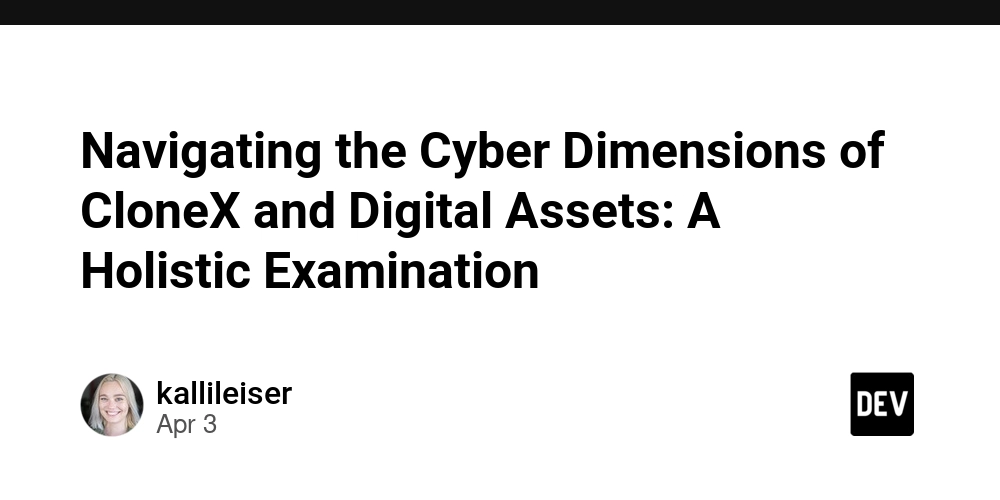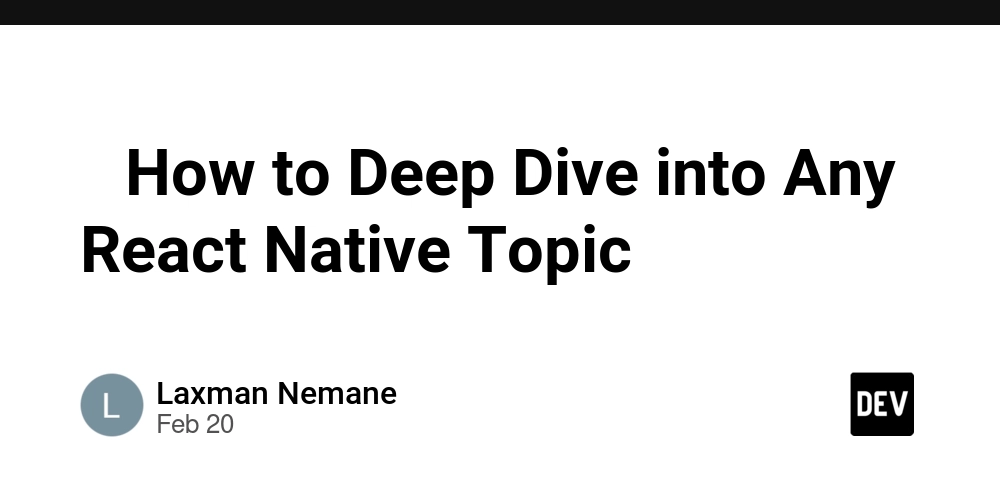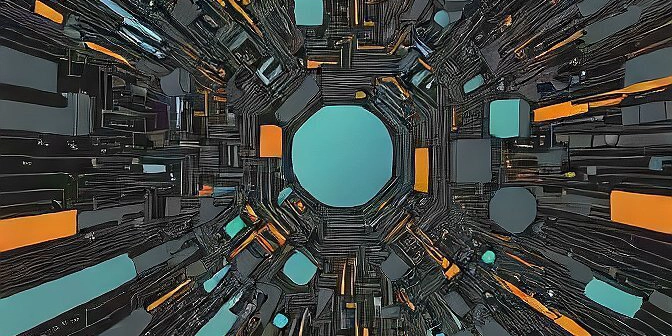Navigating the Cyber Dimensions of CloneX and Digital Assets: A Holistic Examination
Abstract This post provides an in‐depth exploration of the cyber dimensions influencing the revolutionary CloneX NFT ecosystem alongside emerging digital assets. Covering historical context, core cybersecurity challenges, technical vulnerabilities, application use cases, and future trends, we integrate insights from blockchain engineering, open source initiatives, NFT innovation, and cyber defense. By weaving in authoritative resources such as the original article, RTFKT, and key technical guides on what are NFTs and smart contracts, this article provides readers with a technical yet accessible guide on navigating this new digital landscape. We also touch on cyber warfare concerns, cross-chain interoperability, and open source funding perspectives, drawing on insights from dev.to experts. Introduction In recent years, digital assets and NFTs have ushered in a new era of art and technology convergence. Among these innovations, CloneX—a collection of blockchain-verified digital avatars from RTFKT Studios in collaboration with artists like Takashi Murakami—has gained remarkable attention. However, as these digital assets gain mainstream appeal, they also bring with them novel cybersecurity challenges and vulnerabilities. This post examines the cyber dimensions of the CloneX ecosystem in a holistic manner. We discuss how digital assets can be both a canvas for groundbreaking innovation and a target for cyber-attacks. Our discussion is informed by perspectives drawn from blockchain security studies, open source licensing debates, and emerging trends in cross-chain technology. Background and Context Digital assets, particularly NFTs, represent a transformative confluence of art, technology, and finance. NFTs—non-fungible tokens—offer unique value propositions by ensuring authenticity and ownership via blockchain technology. CloneX stands as a prime example of this revolution, blending high-end digital art with the technical underpinnings of the blockchain. Historical precedents in exploits and cyber attacks in digital asset ecosystems illustrate a consistent need for robust cybersecurity measures. Key definitions to note: NFTs (Non-Fungible Tokens): Unique digital assets verified on a blockchain. For a primer, explore What Are NFTs. Smart Contracts: Self-executing contracts with terms directly written into code. More details can be found in Smart Contracts on Blockchain. Digital Proxies: Digital avatars that can potentially be hijacked by malicious actors to orchestrate cyber-attacks. The ecosystem comprises blockchain developers, open-source communities, and cyber defense strategists. Moreover, comprehensive security frameworks and recent events in cyber warfare in relation to NFTs add vital context to our analysis. Core Concepts and Features The cyber dimensions of CloneX and similar NFT projects highlight several key areas: 1. Digital Asset Verification and Authenticity Digital assets such as CloneX rely on blockchain cryptography to ensure authenticity. This provides unprecedented ownership transparency while simultaneously exposing vulnerabilities if security protocols are compromised. Key elements include: Blockchain Ledgers: Immutable records that track each NFT transaction. Smart Contract Audits: Essential for verifying the logic embedded in NFT transactions. Cybersecurity Safeguards: Necessary to protect against IP infringement and digital impersonation. 2. Cyber Threats and Vulnerabilities NFT platforms, including CloneX, face varied cybersecurity challenges: Digital Proxies for Cyber-Attacks: Compromised avatars can be used as entry points for cyber warfare. Financial Manipulation: Fraudulent trading or financial crimes may be masked as legitimate blockchain transactions. Intellectual Property (IP) Infringements: Cloned or counterfeit NFTs circumvent established security measures. These vulnerabilities underscore the need to fortify blockchain technology as well as integrate continuous monitoring and testing regimes. For further insights on data risks, you might explore NFT and Data Security. 3. Regulatory and Community-Driven Initiatives As digital assets expand exponentially, global collaboration becomes essential to set regulatory frameworks: Enhanced Compliance Standards: Developing enforceable guidelines and blockchain protocols. Community Education: Empowering users with knowledge regarding cyber threats and secure practices. Global Collaboration: Encouraging partnerships between tech companies, governments, and independent developers to establish resilient ecosystems. Additional perspectives on blockchain regulation are available in Blockchain and Cybersecurity. Below is a table summarizing core components within the CloneX and digital assets ecosystem: Component Description Relevance Blockchain Technology Decentralized ledger ensuring data integrity Verifies authenticity and

Abstract
This post provides an in‐depth exploration of the cyber dimensions influencing the revolutionary CloneX NFT ecosystem alongside emerging digital assets. Covering historical context, core cybersecurity challenges, technical vulnerabilities, application use cases, and future trends, we integrate insights from blockchain engineering, open source initiatives, NFT innovation, and cyber defense. By weaving in authoritative resources such as the original article, RTFKT, and key technical guides on what are NFTs and smart contracts, this article provides readers with a technical yet accessible guide on navigating this new digital landscape. We also touch on cyber warfare concerns, cross-chain interoperability, and open source funding perspectives, drawing on insights from dev.to experts.
Introduction
In recent years, digital assets and NFTs have ushered in a new era of art and technology convergence. Among these innovations, CloneX—a collection of blockchain-verified digital avatars from RTFKT Studios in collaboration with artists like Takashi Murakami—has gained remarkable attention. However, as these digital assets gain mainstream appeal, they also bring with them novel cybersecurity challenges and vulnerabilities.
This post examines the cyber dimensions of the CloneX ecosystem in a holistic manner. We discuss how digital assets can be both a canvas for groundbreaking innovation and a target for cyber-attacks. Our discussion is informed by perspectives drawn from blockchain security studies, open source licensing debates, and emerging trends in cross-chain technology.
Background and Context
Digital assets, particularly NFTs, represent a transformative confluence of art, technology, and finance. NFTs—non-fungible tokens—offer unique value propositions by ensuring authenticity and ownership via blockchain technology. CloneX stands as a prime example of this revolution, blending high-end digital art with the technical underpinnings of the blockchain. Historical precedents in exploits and cyber attacks in digital asset ecosystems illustrate a consistent need for robust cybersecurity measures.
Key definitions to note:
- NFTs (Non-Fungible Tokens): Unique digital assets verified on a blockchain. For a primer, explore What Are NFTs.
- Smart Contracts: Self-executing contracts with terms directly written into code. More details can be found in Smart Contracts on Blockchain.
- Digital Proxies: Digital avatars that can potentially be hijacked by malicious actors to orchestrate cyber-attacks.
The ecosystem comprises blockchain developers, open-source communities, and cyber defense strategists. Moreover, comprehensive security frameworks and recent events in cyber warfare in relation to NFTs add vital context to our analysis.
Core Concepts and Features
The cyber dimensions of CloneX and similar NFT projects highlight several key areas:
1. Digital Asset Verification and Authenticity
Digital assets such as CloneX rely on blockchain cryptography to ensure authenticity. This provides unprecedented ownership transparency while simultaneously exposing vulnerabilities if security protocols are compromised. Key elements include:
- Blockchain Ledgers: Immutable records that track each NFT transaction.
- Smart Contract Audits: Essential for verifying the logic embedded in NFT transactions.
- Cybersecurity Safeguards: Necessary to protect against IP infringement and digital impersonation.
2. Cyber Threats and Vulnerabilities
NFT platforms, including CloneX, face varied cybersecurity challenges:
- Digital Proxies for Cyber-Attacks: Compromised avatars can be used as entry points for cyber warfare.
- Financial Manipulation: Fraudulent trading or financial crimes may be masked as legitimate blockchain transactions.
- Intellectual Property (IP) Infringements: Cloned or counterfeit NFTs circumvent established security measures. These vulnerabilities underscore the need to fortify blockchain technology as well as integrate continuous monitoring and testing regimes. For further insights on data risks, you might explore NFT and Data Security.
3. Regulatory and Community-Driven Initiatives
As digital assets expand exponentially, global collaboration becomes essential to set regulatory frameworks:
- Enhanced Compliance Standards: Developing enforceable guidelines and blockchain protocols.
- Community Education: Empowering users with knowledge regarding cyber threats and secure practices.
- Global Collaboration: Encouraging partnerships between tech companies, governments, and independent developers to establish resilient ecosystems. Additional perspectives on blockchain regulation are available in Blockchain and Cybersecurity.
Below is a table summarizing core components within the CloneX and digital assets ecosystem:
| Component | Description | Relevance |
|---|---|---|
| Blockchain Technology | Decentralized ledger ensuring data integrity | Verifies authenticity and secures transactions |
| NFT Verification | Unique tokenization of digital assets | Confirms ownership and prevents forgery |
| Smart Contracts | Automated contracts executed on the blockchain | Enforces rules and transactions without manual oversight |
| Cybersecurity Protocols | Measures to secure the blockchain network and digital proxies | Mitigates risk of hacks and data manipulation |
| Regulatory Frameworks | Standards and laws governing digital transactions | Provides legal and operational clarity |
Applications and Use Cases
The intersection of digital art, blockchain technology, and cybersecurity has opened diverse applications:
- Art and Digital Collectibles: CloneX avatars have become symbols of cultural significance and art. The immutable record of ownership helps artists maintain control over their work. On platforms like OpenSea, collectors can verify the authenticity of digital art.
- Gaming and Virtual Worlds: Many NFT-based platforms integrate with gaming ecosystems, where avatars (such as those in CloneX) can be used within virtual environments offering unique features and in-game benefits.
- Cyber Warfare and Digital Defense: With greater digital asset usage, there is an emerging risk of these assets being used as proxies in cyber warfare. For instance, compromised NFTs could serve as digital entry points in coordinated cyber-attacks. Enterprises and government agencies are exploring blockchain-based cybersecurity measures to counter these threats.
Practical Examples:
- A virtual gaming platform may integrate CloneX avatars to offer in-game rewards, secured by blockchain technology ensuring object permanence and defensible ownership.
- A financial institution leveraging smart contracts may adopt NFT-based collateral mechanisms while ensuring heightened security measures to preclude digital breaches.
- Cybersecurity firms are collaborating with blockchain networks to develop real-time monitoring tools for suspicious NFT trading patterns, thus protecting the integrity of digital asset ecosystems.
Challenges and Limitations
While the potential of digital assets like CloneX is vast, several challenges persist:
- Technical Vulnerabilities: The rapid evolution of blockchain technology sometimes leaves security features lagging behind. Audit procedures may require constant updates to cope with emerging threats.
- Adoption Issues: Regulatory uncertainty and skepticism about digital asset legitimacy hinder widespread user and institutional adoption.
- Interoperability: With various blockchains in use (Ethereum, Polygon, Arbitrum, etc.) ensuring cross-chain functionality remains a significant challenge. Efforts like arbitrum-and-cross-chain-messaging are crucial to address these gaps.
- Cyber Warfare Risks: As digital assets mature, the threat landscape likewise intensifies. Coordinated cyber attacks—ranging from financial manipulation to IP infringement—are increasingly becoming a concern.
- Funding and Developer Support: Sustaining open source and blockchain projects often requires innovative funding models. Initiatives and grants (such as those explored on platforms like NFT Now) are essential but face scalability challenges.
A bullet list summarizing key challenges includes:
- Vulnerability to hacks and data breaches
- Regulatory and legal uncertainties
- Issues with blockchain interoperability
- Financial instabilities in digital asset markets
- Sustaining open source developer funding
For additional perspectives, review discussions in What Are NFTs Valuable.
Future Outlook and Innovations
Looking ahead, the intersection of NFTs and cybersecurity is poised for significant evolution. Several innovative trends are on the horizon:
- Enhanced Blockchain Scalability: Developers are improving blockchain protocols through solutions such as rollups and sidechains. This promises to increase transaction throughput and security concurrently.
- Artificial Intelligence (AI) and Machine Learning: AI-powered systems are being designed to detect anomalous activities on NFT marketplaces, providing real-time threat assessment.
- Interoperability Advances: Efforts to create unified cross-chain protocols are gaining momentum. These innovations aim to ensure seamless participation across different blockchain ecosystems.
- Regulatory Evolution and Global Collaboration: As governments and regulatory agencies better understand digital assets, clearer frameworks will emerge. This parallels the global drive to standardize open source licensing to support innovation, an idea that can be explored further in resources like Navigating Open Source Licenses for Arbitrum Projects: A Comprehensive Guide.
Furthermore, open source communities are actively researching innovative licensing models that could aid in cybersecurity and funding. For example, discussions around the Miros License are leading to more transparent and equitable frameworks for project sustainability. Other related narratives—such as Unveiling the Power of GNU LGPL 2.0 in open source innovation—provide context for how similar approaches are evolving on the blockchain.
Additionally, institutional adoption is on the rise as prominent tech companies and financial organizations begin integrating blockchain strategies into their cybersecurity apparatus. As these trends converge, the digital asset market—anchored by projects like CloneX—will likely see both increased security and mainstream adoption.
Summary
In summary, the cyber dimensions of CloneX and similar digital assets exemplify both the promise and perils of rapidly evolving technology ecosystems. On one hand, blockchain and NFTs usher in unprecedented innovation in art, finance, and digital identity, supported by verifiable authenticity and decentralized transaction processes. On the other hand, the potential for cyber warfare, IP breaches, and technical vulnerabilities demands robust security measures, regulatory collaboration, and continuous innovation.
By understanding the core concepts, challenges, and future outlook detailed in this post, developers, investors, and cybersecurity professionals alike can better navigate digital asset ecosystems. The integration of enhanced blockchain protocols, advanced smart contracts, and global regulatory frameworks will be crucial to mitigating risks and unlocking the full potential of digital transformation.
Key takeaways:
- Digital assets such as CloneX offer transformative opportunities at the intersection of art and technology.
- Cyber threats, including compromised digital proxies and financial manipulations, require robust security measures.
- Collaboration between developers, governments, blockchain experts, and open source communities is vital.
- Future innovations in scalability, interoperability, and AI-driven security will drive the evolution of NFT ecosystems.
- Open source funding and transparent licensing models remain critical to sustaining innovation and protecting user interests.
As the digital landscape continues to evolve, projects like CloneX are not only redefining how art is owned and appreciated but are also at the forefront of integrating cybersecurity into digital culture. For more insights into digital asset adoption and related challenges, you can explore platforms such as NFT Now and OpenSea.
Additional Perspectives from the Developer Community
The evolving synergy between blockchain and open source funding is being actively discussed in multiple online communities. For instance:
- Elon Musk and the Open Source Revolution: Pioneering a New Era of Innovation offers a perspective on why tech leaders are embracing open source as a catalyst for secure digital platforms.
- Unleashing the Power of Tokenization for Sustainable Open Source Innovation examines innovative financing models that could impact NFT projects significantly.
- Navigating Open Source Project Sponsorship: A Guide for Success provides strategies for securing sustainable funding while maintaining a robust security posture.
These external insights not only reinforce the technical aspects discussed in this post, but also provide practical methods for addressing the economic and regulatory challenges of digital asset ecosystems.
Conclusion
Navigating the cyber dimensions of CloneX and digital assets requires a dual focus on technological innovation and proactive cybersecurity. As this immersive landscape evolves, collaborations between blockchain developers, cybersecurity experts, regulators, and open source communities will be paramount. By investing in enhanced blockchain protocols, leveraging smart contract audits, and adopting a regulatory framework that evolves in sync with technology, we can ensure that assets like CloneX not only push the boundaries of digital art but also withstand potential cyber threats.
In this holistic examination, we have covered the historical context and definitions of digital assets, delved into core cybersecurity vulnerabilities, highlighted practical applications, and identified potential future trends. With robust collaboration and forward-thinking innovations, CloneX and similar digital assets will continue to thrive, driving us toward a secure and transformative digital future.
As digital assets become increasingly intertwined with everyday technology, the careful melding of innovation and security is essential. By staying informed and engaged—leveraging resources from RTFKT, What Are NFTs, and industry insights from dev.to—we can collectively foster an ecosystem that values both creativity and digital defense.
Embrace technology, secure the future, and let the revolution in digital assets drive innovation safely and sustainably.











































































































































































![[The AI Show Episode 142]: ChatGPT’s New Image Generator, Studio Ghibli Craze and Backlash, Gemini 2.5, OpenAI Academy, 4o Updates, Vibe Marketing & xAI Acquires X](https://www.marketingaiinstitute.com/hubfs/ep%20142%20cover.png)




























































































































![[DEALS] The Premium Learn to Code Certification Bundle (97% off) & Other Deals Up To 98% Off – Offers End Soon!](https://www.javacodegeeks.com/wp-content/uploads/2012/12/jcg-logo.jpg)


![From drop-out to software architect with Jason Lengstorf [Podcast #167]](https://cdn.hashnode.com/res/hashnode/image/upload/v1743796461357/f3d19cd7-e6f5-4d7c-8bfc-eb974bc8da68.png?#)








































































































.png?#)

































_Christophe_Coat_Alamy.jpg?#)
 (1).webp?#)





































































































![Apple Considers Delaying Smart Home Hub Until 2026 [Gurman]](https://www.iclarified.com/images/news/96946/96946/96946-640.jpg)
![iPhone 17 Pro Won't Feature Two-Toned Back [Gurman]](https://www.iclarified.com/images/news/96944/96944/96944-640.jpg)
![Tariffs Threaten Apple's $999 iPhone Price Point in the U.S. [Gurman]](https://www.iclarified.com/images/news/96943/96943/96943-640.jpg)




































































































































